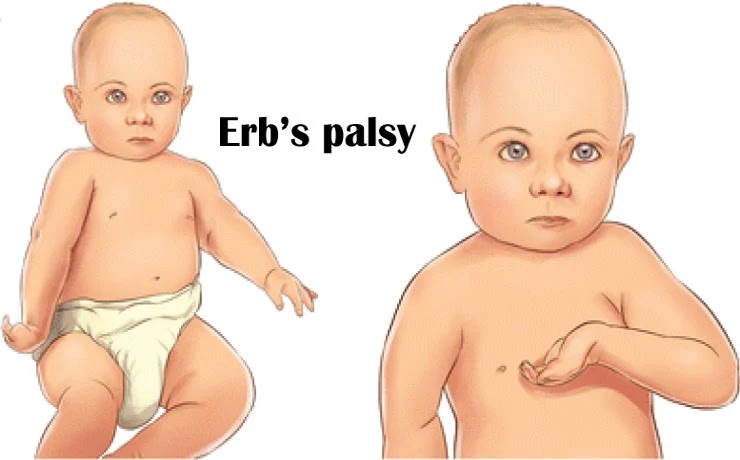Erb's Palsy and the Brachial Plexus: Causes, Signs, Symptoms, and Treatment
Erb’s palsy, also known as Erb-Duchenne palsy, is the paralysis of muscles on one side of the body caused by injury to the upper trunk of the brachial plexus, a network of nerves that control movement and sensation in your upper body and arms. The name Erb’s palsy refers to German physician Heinrich Hermann Erb, who first described this condition in 1880. It’s common among newborns and infants, but it can also occur in children or adults as well.
The common origin of brachial plexus injury
When the baby's head and neck are forced to stretch beyond their normal range during delivery, it can cause damage to the brachial plexus nerves.
.webp) |
| Erb's palsy cause |
This can result in pain, weakness, or loss of motion in the arm on the affected side. In most cases, physical therapy is an effective treatment for Erb's palsy. The therapist will work with you to help stretch and strengthen the muscles around the injury. They may also use electrical stimulation and other techniques to try to reduce your pain and improve your mobility. Physical therapy should be continued until your symptoms improve or disappear altogether.
Sign and symptoms of Erb’s palsy
Erb’s palsy can cause pain, weakness, or loss of motion in the affected arm.
The most common sign of Erb’s palsy is weakness or paralysis of the arm.
The most common symptom is weakness or paralysis in the affected arm. There may also be a loss of motion in the shoulder, elbow, or wrist. The arm may hang limply at the side or be held in an abnormal position. There may be pain in the affected shoulder or arm. The muscles in the affected arm may waste away (atrophy). There may also be a loss of sensation in the affected arm or hand.
Clinical presentation of Erb's palsy patient
The most common presentation of Erb's palsy is an arm that hangs limply at the patient's side. The shoulder may be slightly elevated and the elbow extended. The hand is often held in a position of pronation with the wrist flexed. In severe cases, there may be loss of sensation in the affected arm.
Diagnosis of Erb’s palsy
The diagnosis is based on the physical examination and many other tests. These tests usually include an EMG (Electromyography) to find out the abnormalities of muscles and nerves .
Another test is CT scane or MRI.
If it is unclear whether a child has Erb’s palsy or another type of brachial plexus injury, additional diagnostic testing may be needed. Doctors will take into account the child’s age, history, and symptoms when deciding what type of tests to order.Recovery from Erb’s palsy
Although most cases of Erb’s palsy will resolve on their own within a few months, some infants may require physical therapy to help with the recovery process. The type of physical therapy will depend on the severity of the injury. In some cases, passive range-of-motion exercises may be recommended. These exercises help to stretch out the muscles and prevent them from becoming too tight. Other cases may require active range-of-motion exercises, which involve moving the affected limb yourself.
Physical therapy techniques for the upper limb in people with brachial plexus injury
There are many different physical therapy techniques that can be used to help people with brachial plexus injury. Some of these techniques include
*Range of motion exercises
*Stretching
*Massage.
These techniques can help to improve range of motion, reduce pain, and increase strength. A lot of times a person might not notice they have damage to their nerves until they start having some weakness in their arm or hand. It is important for someone who has had a stroke or another type of neurological problem that effects movement in their upper limb to see a doctor right away so the proper treatment can be prescribed.












Keep it up
ReplyDeleteReally very informative
ReplyDeleteAfter how much time its cureable ??
ReplyDeleteIts it recover permanently?
ReplyDeleteIs any other option for treatment?
ReplyDeleteMeans surgical procedure?
ReplyDelete❤❤
ReplyDelete